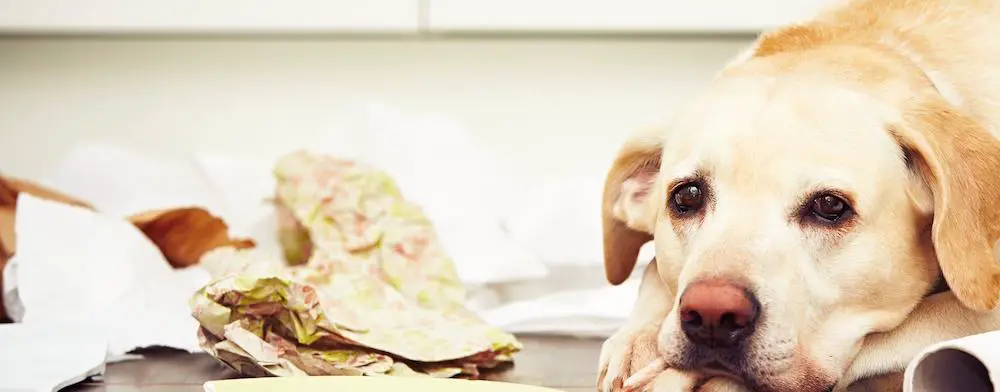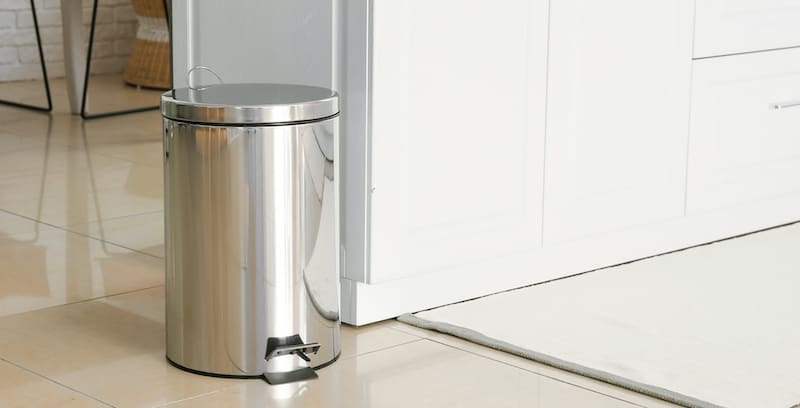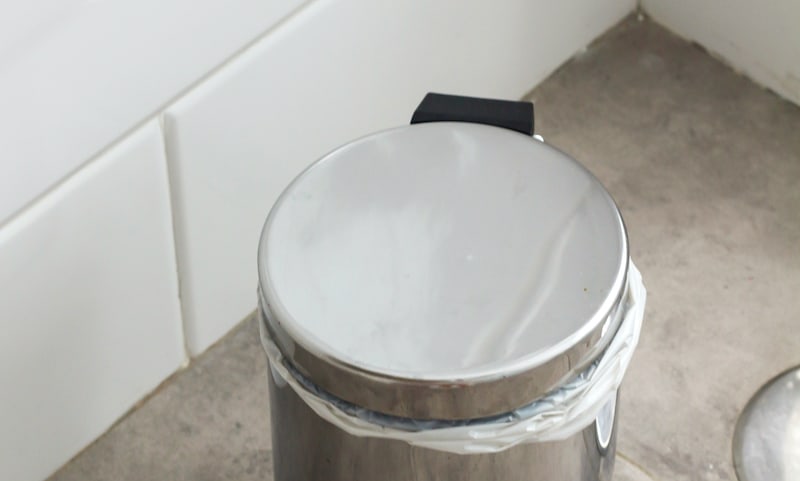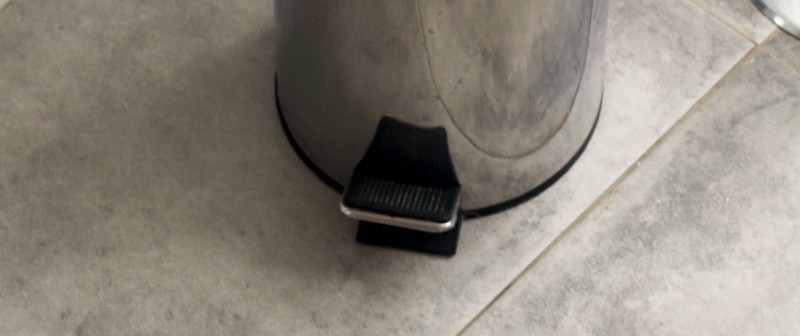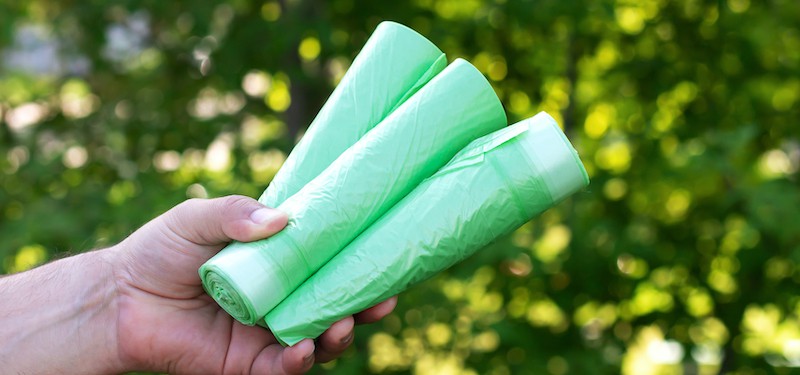How to Keep a Dog Out of the Trash? Tips for Keeping Your Dog Out of Your Garbage
With so many dangers associated with your dog raiding the trash cans, it is paramount to find a way of keeping it out of the garbage.
Preventing your dog from going through the trash can content is a complex issue that requires a multimodal approach.
Here are several helpful tips, but keep in mind that most of them should be combined and used simultaneously for best results.
Find a secure location
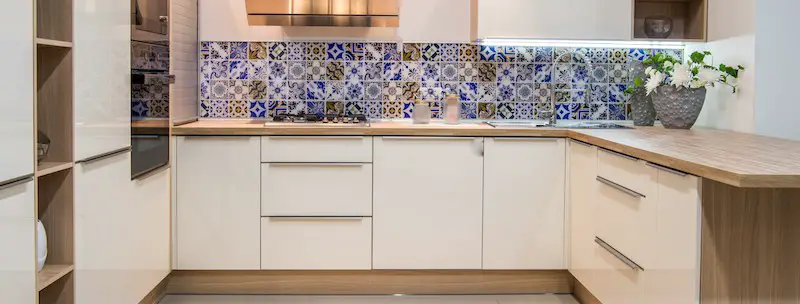
The first thing you need to consider is the location. Ideally, you should put the can out of your dog's reach. Usually, pantries and closets work well.
The location is important not just because of keeping the trash physically away from your dog but also because of limited smell distribution.
If the can is closed, the smells coming out of its content will not provoke your dog, thus decreasing the chances of your dog becoming interested in the garbage.
Pro Tip:
Use a child-proof lock for extra security because many dogs learn how to open cabinet doors.
Frequent garbage emptying
The next thing is emptying the trash can as often as possible to avoid any lingering smells. What is more, you can also avoid throwing away specific extra smelly trash.
For example, if you just had dinner and there are juicy leftovers, do not throw them in the garbage. Instead, pack them in a trash bag and throw them directly into the outside trash.
Add weight to the can
Some dogs like to play with the trash can and can easily knock it over. If the garbage content spills out, its content will become much more interesting for your dog.
To avoid this scenario, you can place something that adds weight to the bottom of the can, for example, a large stone, brick, or gum weight. Simply put, it is hard to knock over something extra heavy.
Use caution when changing trash bags
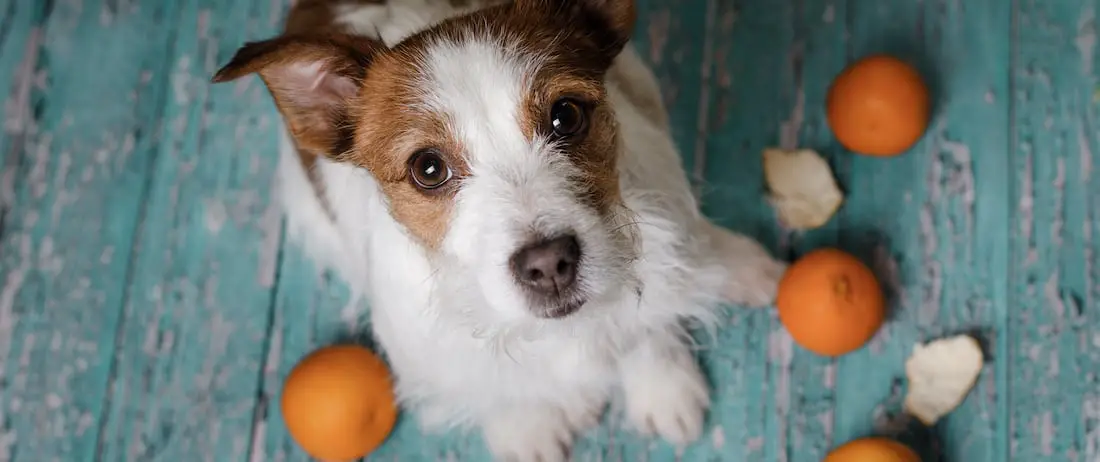
Dogs can be very opportunistic creatures. Even if you keep the bin in a safe location and empty is content frequently, your dog can still get its paws and teeth on the garbage when you are changing trash bags.
It is advisable to ensure your dog is not in the same room as you when taking the old trash bag and replacing it with a new one. It is also recommended to use more robust trash bags that release fewer smells.
These tips are simple and efficient, but they contain the symptoms and do not address the main issue – your dog's desire to dig through the trash. Here are some additional tips on how to limit your dog's trash-raiding inclinations.
Always feed your dog before leaving the house
Your dog is more likely to raid the trash can if feeling hungry. Hunger is a strong driving force for dogs. Even a mellow and well-behaved pooch can turn into a hyperactive and destructive dog when feeling hungry.
You can easily prevent this by making sure your dog is well-fed before being left alone. We are not implying that you should over-feed your dog or offer meals outside of the regular feeding schedule – just make sure your dog is not hungry while you are away.
Plenty of physical and mental stimulation

Your dog is also more likely to go through the trash if it lacks stimulation and feels bored. In fact, bored dogs can be pretty creative when finding sources for self-entertainment.
You need to regularly exercise your dog and offer mental stimulation through interactive games and toys to avoid unwanted behavior.
Understand your dog's infatuation with trash
Before frowning upon your dog's decision to go through the garbage, you need to understand that the dog's ancestor was an opportunistic scavenger – eating what it can find and wherever it can find.
Your modern dog has everything it needs served in its food bowl, but the instinctual drive to scavenge remains written in its DNA code.
Vet Tip:
Since you cannot prevent your dog from following its instincts, you need to channel them through safe outlets. For example, you can provide your dog with different dog-friendly bones and chew toys.
Crate training your dog
In extreme cases, when you cannot control your dog's behavior and specific actions can be hazardous for its health, it is advisable to use a dog crate. For example, if your dog is notorious for its trash-raiding expeditions and you need to leave it alone, the crate is the safest option.
Due to misconceptions and inadequate use, crates are a highly controversial topic in the modern dog parent community. However, when used responsibly and adequately, crates can be life-saving tools.
Vet Tip:
Keep in mind that crate training requires time and patience. It is advisable to start crate training your dog while still a young puppy.

